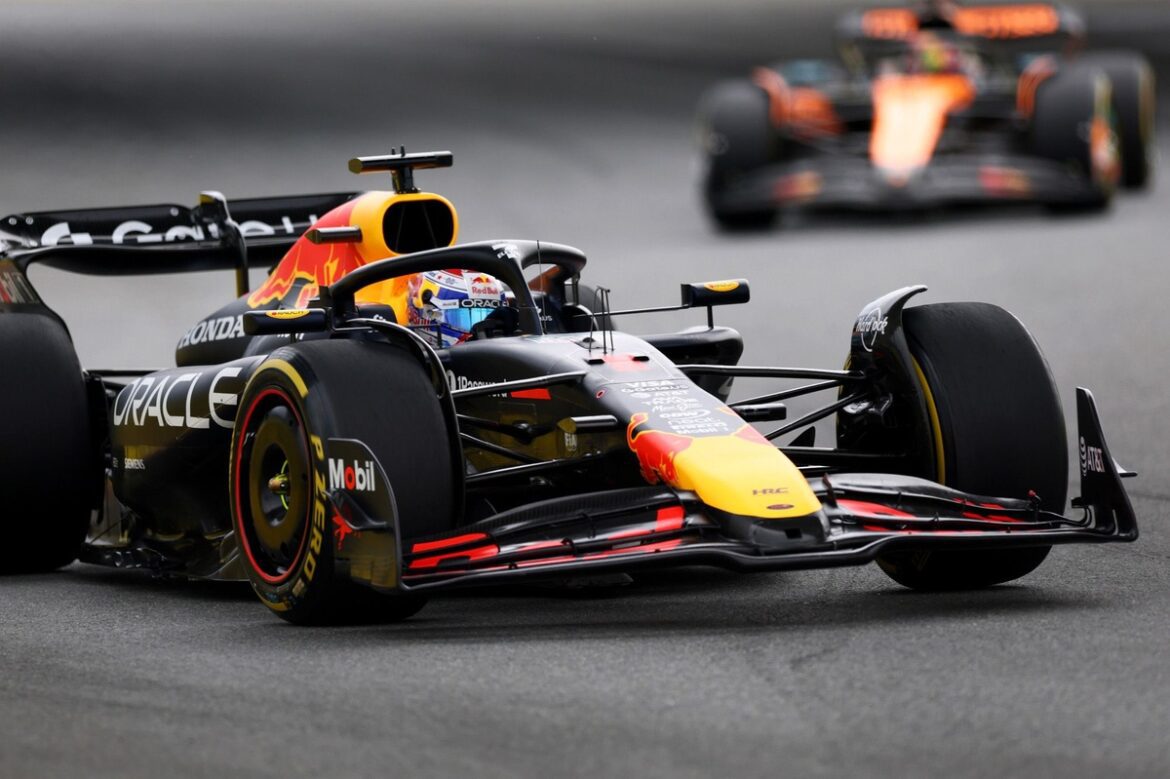Max Verstappen vs. McLaren: A Deep Dive into the 2025 Formula 1 Season’s Competitive Landscape
The thrilling world of Formula 1 racing has witnessed a remarkable season in 2025, particularly highlighted by McLaren’s breathtaking 1-2 finish at the Miami Grand Prix. This victory not only solidifies McLaren’s position as a formidable force in racing conditions, especially concerning rear tire management, but it also raises intriguing questions about the performance dynamics between McLaren and Red Bull Racing, led by the talented Max Verstappen.
This season has seen McLaren dominate the track, with Lando Norris and Oscar Piastri showcasing their skills and securing wins consistently. Piastri’s recent victory marked his third consecutive win, bringing the total to five wins for McLaren out of the first six races. In stark contrast, Mercedes’ George Russell finished a staggering 37 seconds behind in third place, while Verstappen trailed by an alarming 40 seconds. This trend highlights McLaren’s impressive ability to excel when rear tire wear and overheating become significant challenges, allowing them to pull away from the competition as the Pirelli tires begin to degrade.
Interestingly, Verstappen’s lone victory this season came at the Japanese Grand Prix in Suzuka, a race characterized as an "easy" one-stop event where overtaking was nearly impossible. Here, Verstappen managed to defend his pole position effectively, further emphasizing the challenges faced by McLaren in taking advantage of strategic opportunities.
Despite McLaren’s undeniable dominance in race conditions, the qualifying sessions have presented a more complex picture. Verstappen has secured three pole positions out of six races, with Piastri following closely behind with two and Norris capturing one. Notably, in Miami, Mercedes’ Andrea Kimi Antonelli outperformed both McLaren drivers to claim the sprint pole, while Lewis Hamilton of Ferrari took the top spot in China. Verstappen’s pole position in Suzuka was widely regarded as a standout achievement, with his performance in Miami also drawing attention due to the higher-mileage Honda engine he was running, which hindered his acceleration down the straights.
The contrasting scenarios in qualifying have sparked debates about the true speed of the McLaren car over a single lap. This has also incited some psychological maneuvering between the two teams, particularly regarding the roles their drivers play during qualifying sessions. Christian Horner, team principal of Red Bull Racing, praised Verstappen’s ability to excel under pressure, highlighting his knack for delivering impressive performances when it matters most. "It’s those big-pressure moments that separate the great athletes," Horner remarked, emphasizing Verstappen’s talent for rising to the occasion.
While many observers agree with Horner’s assessment of Verstappen’s capabilities, McLaren team principal Andrea Stella offers a differing perspective. He acknowledges that the McLaren MCL39 has significant potential for quick lap times but suggests that both drivers have been struggling to consistently extract that performance. Norris has faced challenges in adapting to the car’s substantial changes from previous seasons, while Piastri, despite handling the transition better, has also missed out on pole opportunities due to minor errors.
Stella’s analysis indicates that while the McLaren car is exceptionally fast under various conditions, it has a "numb" front axle that hampers the drivers’ ability to gauge its behavior accurately, particularly when pushing the limits. This lack of feedback can lead to unpredictability, making it difficult for both Norris and Piastri to replicate their strong performances in qualifying sessions.
"We have enough data to confirm that the car is easier to exploit during race simulations than in qualifying," Stella noted. He pointed out that their drivers have yet to deliver a perfect lap, with Piastri’s performance in Bahrain being the closest they have come to achieving that goal. The issues seem to stem from front-end locking and braking, with the car performing better during continuous laps rather than isolated qualifying efforts.
Stella argues that the narrative suggesting Verstappen’s superiority over McLaren drivers during qualifying sessions stems from technical limitations rather than a lack of driver skill. He expressed frustration with Red Bull’s tendency to portray their achievements as miraculous while downplaying the challenges faced by other teams. "Red Bull excels at crafting narratives that work in their favor," Stella stated, emphasizing the importance of focusing on their own performance and improvements.
This leads to a philosophical contemplation: is a car truly faster if its drivers cannot consistently exploit its potential? Stella believes that distinguishing between the absolute potential of a car and its real-world performance is complex. "The better car is not just about raw speed; it’s about how much performance the drivers can extract from it," he explained.
In the context of the ongoing 2025 season, as the Formula 1 calendar shifts to Europe, the eagerly anticipated qualifying battles will provide further insights into the evolving dynamics between Red Bull and McLaren. Both teams are preparing upgrades in response to the FIA’s stricter front wing flex test, which is expected to create shifts in performance across the grid. The question remains: can McLaren develop a more user-friendly car that enables their drivers to maximize their potential, or will regulatory changes hinder their progress?
As the season unfolds, fans and analysts alike will be keenly observing how these developments influence the competitive landscape of Formula 1. The rivalry between Max Verstappen and McLaren’s talented duo promises to deliver thrilling races and captivating storylines, keeping fans on the edge of their seats as they witness the unfolding drama of the 2025 season.
